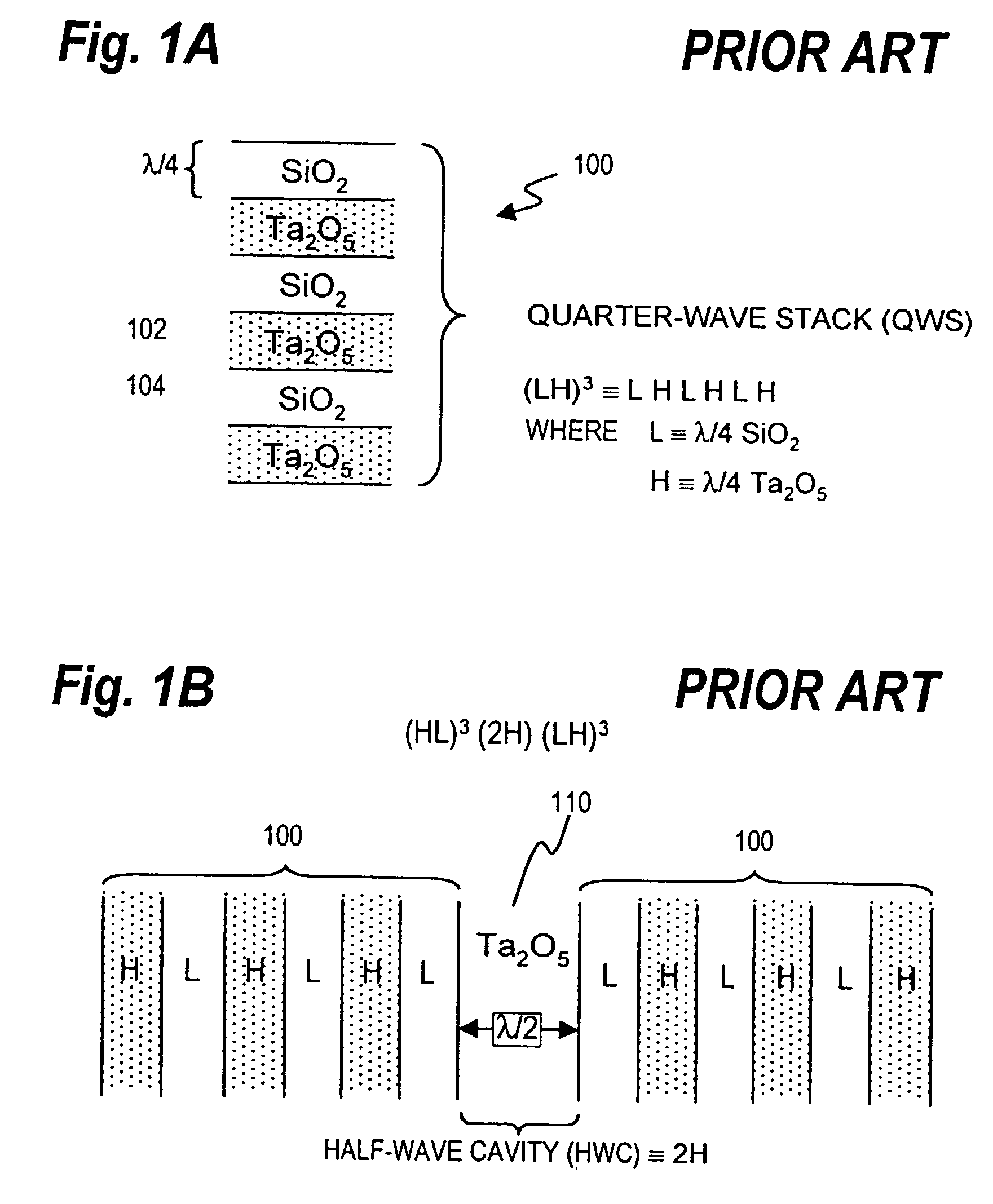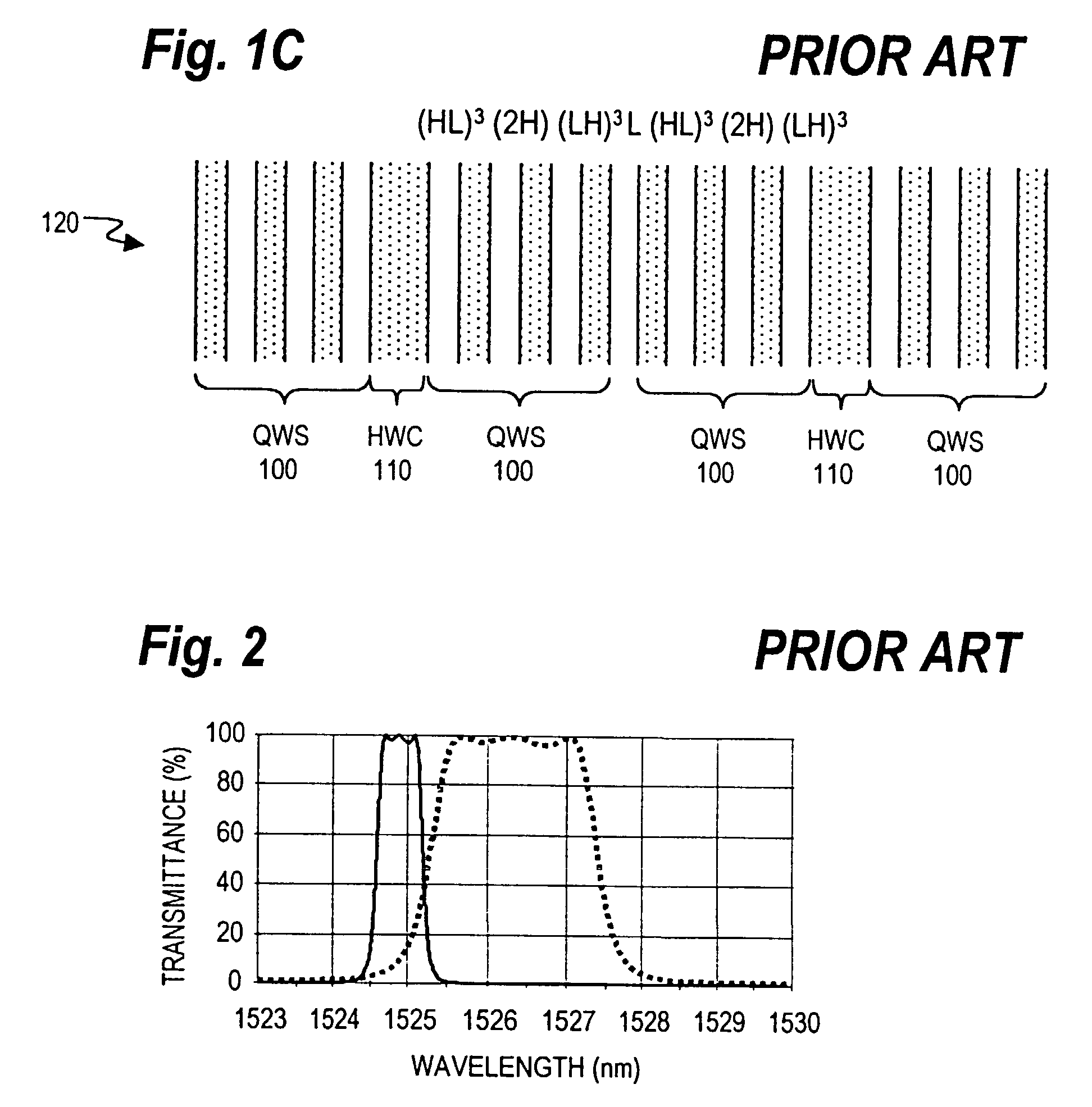Polarization independent thin film optical interference filters
a thin film, optical interference technology, applied in the direction of optics, optical elements, instruments, etc., can solve the problems of limited application of tffs as tunable filters, limited effect of 5% of center wavelength, and state-of-the-art vacuum deposition techniques
- Summary
- Abstract
- Description
- Claims
- Application Information
AI Technical Summary
Problems solved by technology
Method used
Image
Examples
Embodiment Construction
:
[0074] FIG. 3 is diagram illustrating a filter design according to method (1) of the present invention. Method (1) is as follows:
[0075] Method (1): Add (or subtract) a small increment of thickness to each HWC in a filter, equally.
L H [2mL] H L . . . ->. . . L H [2mL+.DELTA.] H L . . . or
L H [2mL] H L . . . ->. . . L H [2mL-.DELTA.] H L . . .
[0076] for all HWC in the filter.
[0077] This is equivalent to designing the HWC to have a slightly different resonant wavelength then the surrounding QWS's.
[0078] This change directly affects the relative rate at which the S and P-polarization bandpasses angle-tune. To achieve the goal of having the S and P bandpasses tune together with increasing AOI, a low-index HWC is made to be resonant at longer wavelength than the QWS, and a high-index HWC is made to be resonant at a shorter wavelength than the QWS.
[0079] In the example of FIG. 3, the filter prescription is:
[0080] AIR I (HL).sup.5H(6.05L)(HL).sup.11H (6.05L)(HL).sup.5 H I GLASS
[0081] Where...
PUM
 Login to View More
Login to View More Abstract
Description
Claims
Application Information
 Login to View More
Login to View More - R&D
- Intellectual Property
- Life Sciences
- Materials
- Tech Scout
- Unparalleled Data Quality
- Higher Quality Content
- 60% Fewer Hallucinations
Browse by: Latest US Patents, China's latest patents, Technical Efficacy Thesaurus, Application Domain, Technology Topic, Popular Technical Reports.
© 2025 PatSnap. All rights reserved.Legal|Privacy policy|Modern Slavery Act Transparency Statement|Sitemap|About US| Contact US: help@patsnap.com



